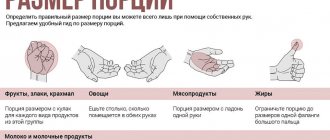What are the benefits of walking?
Many are accustomed to thinking that if you get cardio exercise, it must be through running, cycling or skiing. However, walking, just like the exercises listed, strengthens the cardiovascular system, being the most non-traumatic type of activity.
Here are just some of the most noticeable benefits that walking gives your body:
- helps you lose weight or maintain a healthy weight;
- long and fast walks increase endurance;
- helps prevent or manage chronic diseases;
- for people leading a sedentary lifestyle, 20 minutes of walking a day reduces the risk of premature death by 16-30% (American Journal of Clinical Nutrition study);
- for older people, an hour's walk 3 times a week reduces the risk of dementia;
- walking strengthens the heart;
- relieves stress, reduces anxiety;
- Walking as a means of cross-training allows your joints and muscles that are actively involved in running to rest;
- On a rest day from training, walking is an effective way to burn fat and increase blood flow for muscle recovery.
Benefits of walking
A sedentary lifestyle, especially sedentary work at a computer, increases the chance of heart problems, obesity, and even cancer.
By walking at a fast pace, you strengthen the cardiovascular system, blood circulation, and respiratory system. With regular exercise, cholesterol levels are reduced, which prevents the development of atherosclerosis and varicose veins. No massage can replace walking if you have problems with intervertebral discs. Even digestion improves. When walking, all organs are saturated with oxygen, waste and toxins are eliminated.
What muscles work when walking? Almost all the muscles of your body are involved: the abs, muscles that support the spine, lower back, buttocks, lower legs, calves.
At any level of exercise, walking will make you more resilient and relieve stress.
On average, a person walks 2-3 thousand steps a day. The Japanese, famous for their longevity, consider it necessary to complete 10 thousand. This is quite possible if you replace public transport with walking, give up the elevator, trips to the shops by car, etc.
How to walk correctly
Let's start with your cadence or stride frequency. Take short and frequent steps, as long strides can cause pain in your feet and hips. For an adult, it is optimal to take 113 steps per minute, but an accelerated pace will require about 150 steps per minute.
If you decide to replace running with walking today, for optimal results and calorie expenditure, double the walking time or spend more time. Were you going to run for 40 minutes? Then walk at a fast pace for 80 minutes.
Subscribe to “Marathon Man” on Telegram. Announcements of articles and useful selections every week.
But if you don't have enough time to walk for two hours, break up your walk. Take a walk during your lunch break and then walk home from work. This way, you will have even more free time for family and relaxation.
In general, walking, unlike running, is not incorrect from a technical point of view. Inflammation of the periosteum, stress fractures, and inflammation of the Achilles are just a small part of the injuries suffered by runners. Runners have a much higher risk of exercise-related injuries than walkers. Walkers have a 1 to 5% risk of injury, while runners have a 20 to 70% risk of injury.
How to Walk for Maximum Benefit
To maximize the benefits of walking, you should follow some rules:
- Walks should be daily.
- You need to walk continuously for 30–40 minutes.
- Of course, you can walk on a treadmill in the gym, but the greatest benefit will come from a walk in the fresh air. It could be an evening walk in the park.
- To train the heart, blood vessels, and muscles, it is better to walk at an average or fast pace - over 120 steps per minute. A brisk walk can replace a full workout in a fitness center. Slow walking at a speed of about 70 steps per minute is good for the nervous system. It calms, relieves stress and tension. The training effect is reduced.
- The walk begins with a quick step. If fatigue occurs, the pace is reduced after 5-15 minutes. You can walk slowly for a few minutes and then pick up the pace again. Gradually increase the duration of your daily walk at a fast pace. To get the maximum benefit and results from exercise, you need to walk at a fast pace for at least an hour.
To train the cardiovascular system, in addition to regular walks in the fresh air, it is recommended to add ascent and descent of stairs. If you give up the elevator and walk every day, for example, to the 5th floor, you can also lose significant weight. There is no need to overload yourself. Walking on stairs should start with 5 minutes a day. Gradually the time is increased to a quarter of an hour.
Walking on uneven roads can also be an additional burden. You just need to choose a site for a walk along the hilly terrain. The effectiveness of training will increase the ascent and descent of small slopes. This will increase your stamina and improve your fitness.
During training, you need to monitor your heart rate. To ensure optimal load, you can calculate your ideal heart rate using the following formula:
(220 – age)x0.65.
So, for example, if a trainee is 35 years old, then his ideal heart rate during training will be (220-35) x 0.65 = 120 beats per minute. It should be taken into account that 10 minutes after the end of the walk, the pulse should return to normal and be the same as before the workout. If this does not happen, then there may be 2 reasons for this - either the load was too heavy, or the person has any health problems, in particular with the heart.
How far do you need to go to get the benefit? Experts have calculated that and well-being a person needs to take about 10,000 steps every day. This is 6–8 km.
But of course these norms are conditional. The main thing is to walk every day for at least about an hour, if more is even better.
Many people wonder whether walking in place is beneficial or not. In autumn and winter, in bad weather, walking in the fresh air can be replaced by walking on a treadmill. You just need to set the required speed, take into account the mileage, control your breathing and pulse.
Walking is incredibly beneficial. Every step fills the body with energy. Positive changes occur in the body. Therefore, you need to move at every opportunity. Gratitude for this is excellent health, vigor and longevity.
How many calories are burned by walking in 1 hour?
If you want to burn more calories and lose weight faster, it is, of course, better to opt for running. However, walking also provides many health benefits and helps you maintain a healthy weight.
Running will require twice as many calories as walking. However, if after running you eat a portion twice as large as usual, you should not expect weight loss.
A man weighing 72 kg will burn 300 calories in an hour of walking at a speed of 5.5 km/h. When running at a speed of 8 km/h, the same man will burn 600 calories. To achieve results in losing excess weight, we recommend combining these two types of exercise.
For example, the author of this article does not use transport if the desired destination is 3 km away or if there is a trip with transfers: you can walk to the stop from where you can leave directly. In addition, sometimes during evening traffic jams it is much faster and more pleasant to walk home or an intermediate stop than to hang on the handrail in a crowded bus.
For owners of personal vehicles, the recommendation is this: do not use your car for short distances. There are several advantages here: health benefits, no need to look for parking, saving on gasoline, reducing the load on road infrastructure. Walking is environmentally friendly!
Don't forget that it's not just your walking speed that affects the amount of energy you consume. Walking uphill will require much more calories than walking on the plain. You can find a hilly area outside or set the incline on your treadmill to 5%. Gradually increase the incline to maximum, usually 15%.
Despite all the obvious benefits of walking, you still have to watch your diet if you want to lose weight. At the National Laboratory. Lawrence Berkeley (USA) collected data from more than 15,000 walkers and 30,000 runners to determine which group lost weight more effectively.
The study found that runners were generally able to control their weight more effectively and were overall slimmer. One likely reason for this is the aftereffect of intense exercise, which increases metabolic rate and increases calorie consumption for 14 hours after activity. There is no such afterburning of calories in walking.
Another reason runners lose weight better is because of their post-workout caloric intake. In a study published in the Journal of Obesity, researchers found that walkers were more likely to overeat than runners after a 60-minute workout.
After the training, all study participants were invited to a buffet where they could choose their dishes. The walkers ate 50 more calories than they burned during exercise, while the runners ate 200 fewer calories than they burned during exercise. Runners were also found to have higher levels of peptide YY, a blood hormone that suppresses appetite. This was not observed among pedestrians.
What are the benefits of walking?
The benefits of walking can hardly be overestimated; they can:
- Strengthen the health and general condition of the body.
Research shows that walking can reduce your risk of heart and vascular disease by three times.
In addition, thanks to an active lifestyle, bones are strengthened, blood pressure is regulated, muscle tissue is toned, and sleep patterns are normalized.
By walking for several hours every day, you can reduce the risk of cancer in the mammary glands and eliminate pain in the lumbar region, which was previously chronic.
- Partially replace sports and help reduce excess weight.
Walking increases your heart rate, which increases blood flow and improves oxygen supply to your muscles. While walking, calories are burned 5 times more than when at rest.
- Extend youth.
Aging is associated with a high level of special proteins in the body, which contribute to the development of inflammation and all kinds of “age-related” diseases. By walking every day, you can reduce the amount of such proteins and maintain youth for as long as possible. Brisk walking increases a person's life expectancy in a ratio of 1:2, that is, by walking for 1 hour you can get an additional 2 hours of life.
- Cheer up.
The benefits of walking, even for half an hour, are the effect of raising self-esteem, having a positive effect on mood, distracting from negative thoughts and energizing. By taking walks in the fresh air, there are all the prerequisites to get rid of impending depression. This happens due to the release of endorphins and neurotransmitters during the release of adrenaline.
- Increase brain functionality.
Mental performance improves as neural connections become stronger. The benefits of walking manifest themselves not only in the left hemisphere, which is responsible for analytical work, but provides a wide field for the realization of creative potential. It has been experimentally proven that the ability to generate ideas increases by 60%.
- Save money.
A pleasant bonus to all the advantages of walking will be that they are “free”. Apart from comfortable walking shoes, there are no longer any restrictions; they do not require financial investments. There is no need to buy a subscription or pay for the services of a trainer. All it takes is a little effort to turn walking into a daily hobby.
How fast and how long should you walk to lose weight?
Note that a leisurely walk in the park will not give you enough exercise to increase calorie burning. You need to walk quickly, although, of course, not as quickly as sports walkers rush.
Active burning of calories begins not from the fact that you make any movements, but from an increase in heart rate. For most people, brisk walking starts at 5 km/h (12 min/km). When walking 7 km/h (08:34 min/km) you will burn the same number of calories as when running at the same pace, but even a beginner can run at this pace, but not even an experienced runner can walk.
Trainers recommend varying your walking pace, just as we do during running workouts. Walk at a fast, uncomfortable pace for two minutes, then slow down to a comfortable pace. Repeat as many times as you like. In addition to actively burning calories, it will improve your aerobic fitness. Your heart rate should rise to at least 100 beats at an accelerated pace.
If you run in addition to walking, an hour of brisk walking is enough to increase your daily calorie expenditure. Thus, in Kenneth Cooper’s work “The New Aerobics: A System of Health-improving Physical Exercises for All Ages,” it is said that to achieve satisfactory fitness, you need to walk 6.5 km at an accelerated pace. In general, this is enough for an hour's walk.
So, let’s summarize the effect of walking on weight loss:
- Running burns more calories than walking, but maintaining a high intensity for a long time is more difficult.
- Due to the lower intensity of walking, a higher percentage of calories burned comes from fat burning, but there is no afterburn effect.
- Both walking and running burn enough calories to help you lose weight, but only if you make the necessary changes to your diet at the same time.
Put on your walking shoes
It doesn't matter how you dress or where you go, it matters that you walk, because every step is a step towards health.
By simply walking, you are also doing the physical activities your body needs that are beneficial and beneficial to you. Sometimes you will feel that it is much more beneficial than constant strenuous exercise because walking is much better for your mental health. If you also use good sneakers for walking, then it will be much easier for you to increase the required pace and show good results.
Good shoes are important. Most sports brands offer shoes specifically designed for walking. Foot comfort is more important than visual appearance. It is important that the sneaker supports your foot and does not pinch or rub. The sole should be raised, the back of the shoe is twice as thick as the front. The sneaker itself should be spacious; your foot should not be pinched, even if you wear thick socks.
Shoes for comfortable walking are always important, but clothing for walking can be chosen based on personal preference. The main thing is that you are comfortable and do not freeze, be it a T-shirt and shorts in hot weather, or a tracksuit in chilly weather, layering in clothes if the temperature outside the window is already approaching zero, using various modern technologies such as Gore-Tex and the like functional membrane fabric that will protect you from dampness, help you quickly remove sweat and not freeze.
Before you decide to go for a brisk walk, stretch to warm up your muscles. Start at a slow pace, gradually speeding up and gradually slowing down towards the end of the walk. Start with routes that are within your range and then increase your distances as you progress. The same goes for your pace: start modestly, then raise your speed as you get into shape. Alternate between a fast pace and a less intense one, and then gradually expand these faster intervals. Add ups and downs for variety and added intensity.
One of the best things about walking is that you don't need any special skills, much less lessons. The main thing is to walk naturally and comfortably. But if you want to strive for perfect technique, here are a few tips to help. Try to keep your chin pointing up, your eyes forward and your shoulders back. Keep your back straight and your stomach flat. Keep your arms close to your body with your elbows bent. Always take a natural stride, but try to lengthen it as you gain experience. Land on your heels and then roll your foot forward to push off with your toes.
Finding the motivation to go for a walk is always easier than to go for a run - walk with friends, walk the dog, go to work, go to the store.
If you feel unwell or injured, avoid hiking and always listen to your body. Drink more water and always adapt to weather conditions. For example, you can walk around in a shopping center if the weather is bad, it’s raining, snowing or icy outside. You can also walk on a treadmill at home or at a fitness club.
What muscles work when walking?
At a slow walking pace of less than 5 km/h, muscle activity is minimal. Power walking starts at 6 km/h. At this pace, the legs, hips, and knees are actively strengthened. The abdominal and arm muscles are used to a lesser extent; the core muscles act as a stabilizer.
When walking uphill, a good load is placed on the quadriceps, gluteus maximus and calf muscles.
Nordic walking, in addition to those already mentioned, uses the muscles of the cervical-brachial region, pectoral and scapular muscles, triceps and biceps.
Race walking or running - which is healthier?
Both walking and running have almost the same effect. Both types of vigorous activity involve similar muscles and parts of the musculoskeletal system. The difference is that running requires a greater degree of physical fitness and endurance.
You should start running only after strengthening your body by walking on a regular basis. Jogging is recommended for people who are not overweight. Otherwise, high loads can harm the heart and joints.
Walking does not require good physical fitness. An intense one-hour walk, according to doctors, can not only replace a half-hour jog, but is also more beneficial for health.
How long is it recommended to walk each day?
Everyone has probably heard about 10 thousand steps a day to get rid of all diseases and problems? As in the case of 2 liters of water, this is a stereotype. And it comes from Japan, where the inventor of the first electronic pedometer, Yoshiro Hatano, called it Mampo-kei. Translated into Russian, this means “10,000 steps.” One version of why Yoshiro named his invention this way is that it’s just a beautiful round number.
10,000 steps is approximately 8 km. And many, of course, are frightened by this figure. There is no need to take it literally, because there are a lot of variables: what surface a person moves on, at what speed, in what weather conditions and, finally, what kind of training a person has. Even going up from the 1st floor to the 18th-20th floor a couple of times carries a load that is much greater than idle wandering throughout the day.
A simple rule: less is better, but more is more active. Research from the Active 10 Project shows that 3 brisk, 10-minute walks a day are healthier than 10,000 slow steps. In addition, short but fast walks are better suited for the modern rhythm of life.
The recommended rate of physical activity for a person is at least 150 minutes per week. Such recommendations are given by the World Health Organization. Walking or other activity should be done at least 30 minutes a day, 5 times a week. And this is just to maintain health. Note that physical activity can be distributed throughout the day:
- 10 minutes of brisk walking three times a day;
- or 20 minutes in the morning and 10 minutes later during the day.
Doctors advise counting not the steps taken, but the total time of physical activity, but if you are still interested in the numbers of steps taken, there are now many fitness bracelets on the market with a step counting function. The same mobile applications can be installed on any smartphone.
What types of walking are there?
Globally, walking can be divided into three types:
- natural movement;
- sports and recreational walking;
- military applied movement.
This group includes the Olympic track and field discipline of race walking, in which the athlete is required to constantly keep his foot in contact with the ground.
Nowadays Nordic walking with the help of specially designed poles is experiencing an explosion in popularity. For those who want to lose weight, walking with poles is the most effective activity, since the calorie burning here is almost the same as in running. A noticeable advantage of Nordic walking is that it activates not only the leg muscles, but also the muscles of the upper body.
Read on the topic: Nordic walking: benefits, technique, beginner mistakes
Health path is a gentle form of health-improving walking. The patient usually walks under the supervision of a doctor along marked routes. One of the first health path routes in Russia was laid in 1901 in Kislovodsk. A health path involves dosed physical activity taking into account the landscape.
Healthy skiing, just like healthy running, should not cause discomfort to the practitioner. In winter, skiing becomes a good alternative to running, since such activities involve almost all muscle groups without impact on the joints. Skiing also develops your sense of balance.
What type of walking is beneficial?
In fact, therapeutic walking and walking, for example, to work, are the same thing, with the exception of some nuances. To get the most out of walking, follow some proven tips.
Movement technique
To prevent your muscles from getting tired, ensure proper posture. Move your pelvis back, chest forward, straighten your shoulders. Sometimes it takes a long time to walk. Slouching in this case will quickly tire you, and unpleasant pain will appear in your back and shoulders. Such walking only gives stress.
Choose your own step length. Your hands should be given freedom. Don't limit them. If you feel like moving your arms while walking, do so. There is no need to cross them across your chest or put them in your pockets. Let your arms move with every step.
If you want to increase the fat-burning effect of your exercise, buy poles and take up Nordic walking.
Breath
How to breathe correctly when walking: inhale through your nose, exhale through your mouth. Get used to this rhythm, this is how you breathe while running.
Even those who have a stuffy nose at rest can often do without vasoconstrictor drops. Notice that during physical activity breathing becomes easier - magic, right?
To better ventilate your lungs, periodically inhale as much air as possible, and then take a full breath. You shouldn't breathe like that all the time - you may feel dizzy. But once every 2-3 minutes is very useful. Just inhale slowly and deeply. If you pay attention to your breathing, the benefits of walking will increase significantly.
Speed and heart rate
It is important to consider what your heart rate should be when walking. Its value is affected by the speed of your steps and the characteristics of the road (slope, surface, etc.).
For healthy people, it makes sense to choose a load when walking will be a little difficult, but comfortable. That is, it should be difficult to have a long conversation while walking, but you should be able to say a couple of phrases.
You can monitor your pulse based on your feelings. If there is discomfort in your chest, you are walking too fast. It's best to use a heart rate monitor. Make sure your heart does not beat faster than 100 beats per minute. This is optimal for walking. Further acceleration of the heart is typical for running.
For a physically prepared person, cardio walking implies a fairly high pace.
People with heart disease should closely monitor their heartbeat. Make sure you have a normal heart rate (80-90 beats per minute) while walking. This provides an additional guarantee that you will not harm yourself. Over time, when your cardiovascular system gets a little stronger, you will be able to increase your walking pace.
Depending on your physical fitness and health, the optimal speed for you will vary. The dependence here is direct - the better your preparation, the faster you should walk. The average walking speed is 4–7 km per hour. The benefits of fast walking include not only a healing effect, but also a training effect on the body.
And the healing effect is achieved due to the fact that the heart begins to beat somewhat more actively than at rest, and the lungs are deeply ventilated.
Healthy thoughts
Attitude and mood play a big role in any business. Let's just say, not even a big one, but a decisive one. If you do something without the mood, the result will be weak, perhaps even completely unsuccessful.
You should focus on your feelings while walking, realize that you are healing yourself, that your path is just healthy walking, and not a journey from point A to B. Then your body will “tune in” to self-healing. Our thoughts determine our existence, no matter what the skeptics say. For some, let it be some kind of magic, and for others – complex physiological processes associated with hormonal regulation. Yes, exactly with her. Thought sets the body to a certain mode of operation, this is partly the essence of psychotherapeutic auto-training.
If you're just going somewhere and you're not in a good mood, it's not a wellness event.
External conditions
If you go for a walk in cold or damp weather, there is a high chance of catching a cold. There is nothing healthy here. Although, for the sake of fairness, it is worth saying that for some such a walk can cause a hardening effect. Some have. The rest will end up with acute respiratory infections. And if you also get your feet wet and freeze well, you risk getting really sick.
Therefore, walking for health requires good and warm weather and comfortable conditions. If you live in the northern region, purchase a set of clothes that will reliably protect you from rain and cold wind.
Health-improving walking instead of medications is relevant when you are dressed appropriately. If you could walk naked in the warm season, this would be the best attire. But in our world they will not understand you. Therefore, buy comfortable and high-quality items designed for an active lifestyle.
Clothes need to wick moisture away, keep you warm in cold times and cool in hot times.
If you are traveling long distances, take a backpack with you that contains a water bottle. This will help avoid dehydration.
A very important factor in the external environment is air, or, more precisely, the degree of its purity. Walking near a paint factory is unlikely to do you any good. On the contrary, you may even feel itching in the nasopharynx and heaviness in the chest. This is not a benefit, but a clear harm. The same can be said about walking along the roadway. The best place is a park area or forest.
After all, we all know that plants are photosynthetics. Give them enough sunlight and they will literally flood their environment with oxygen. This is only to our advantage. Any blade of grass, and especially a tree, produces oxygen throughout its green period.
Some notes
- Walking in the morning will be very productive. It will invigorate you before the working day and speed up your metabolism. This way, you can eat more food and not worry about your figure.
- Walking is good for losing weight. Long walks are a good opportunity to burn off extra calories.
- If you have flat feet, get orthopedic insoles. It is harmful to walk for a long time without them. If you have sore joints, try not to overload them.
- Walking can bring not only benefits, but also harm. Yes, harm can be caused by this safe method of transportation if you constantly exhaust yourself.
How far can a person walk?
For most healthy people, walking at a speed of 5 km/h is easy, and walking for 2 hours without stopping is usually not difficult. But how many kilometers can a person cover in a day?
Only a trained person can walk without stopping all day long, and for the vast majority of people, a continuous walk for 4-5 hours will be very difficult. There is already a high risk of injury if there has been no preliminary preparation with a gradual increase in volume.
In a day, with proper physical shape, you can walk 100+ km. For example, every year in Novosibirsk the Club of Tourists and Mountaineers of the SGUPS (NIIZhT) organizes the so-called “Sotka”, the participants of which complete a 100 km hike in 24 hours.
How to walk correctly and how many kilometers should you cover daily?
There are basic rules for walking. There are only three of them. Walking should be moderate, regular and you should gradually increase the time and number of kilometers.
When walking, you need to listen to your body and general well-being, choose a moderate pace and the optimal time for walking in the fresh air. It is important to have fun and not overexert yourself, then the benefits of such walks will be colossal.
Regular walking is key. You need to walk every day for 1 hour. This is the minimum that is needed for the overall health of the body. If possible and willing, walking time should be increased to 2–3 hours a day.
Walking at an accelerated pace is an excellent cardio workout that actively burns calories. So, a 15-minute walk burns about 100 calories.
It is recommended to walk 10 thousand steps daily , which is equivalent to 8 kilometers. Not an easy path, but with years of regular walking you will cover this distance with ease.
To measure the distance traveled, you can purchase a special device (pedometer) or install an application on your mobile phone. There are wristwatches with determination of the distance traveled, a heart rate monitor and a calorie burn counter.
Walking Rules
Although walking is the safest sport, however, there are some nuances that, if not followed, can result in injury:
- The gaze should be directed forward and the chin should be parallel to the ground.
- The abs are kept in tension to avoid unnecessary stress on the back.
- When walking, bend your elbows, your arms should be free and relaxed, but you don’t need to swing them too much.
- Your posture must be correct: keep your back straight, do not lean forward or slouch.
- Walk from heel to toe.
- The shoulders, face and neck should be as relaxed as possible.
- Smile, because a good mood prolongs life.
How long does it take to complete a marathon?
A standard walking speed of 5 km/h will allow you to cover the 42.2 km marathon in 8.5 hours, but such a long walk requires months of preparation, as well as good and comfortable shoes.
Professional race walkers will, of course, complete the marathon faster than most recreational runners. For example, to receive the title “candidate master of sports of Russia,” men must walk 50 km in 4:45:00 at a speed of 10.53 km/h (05:42 min/km), that is, 42.2 km at this pace. will pass in 4 hours. For masters of sports, the standard for 50 km is 4:20:00 (11.54 km/h – 05:12 min/km). Converted to a marathon distance, this equals 3 hours 40 minutes.
The world record in 50 km race walking belongs to the French athlete Yoann Dini - 3:32:33 (14.1 km/h - 4:15 min/km). He would cover 42.2 km at a walk in 2 hours 59 minutes!










